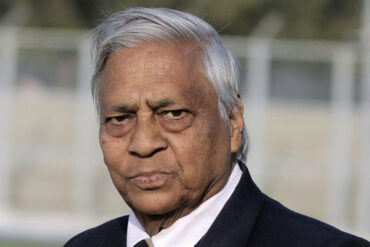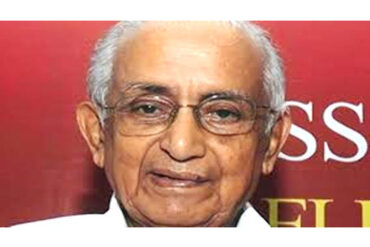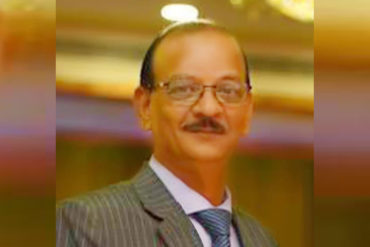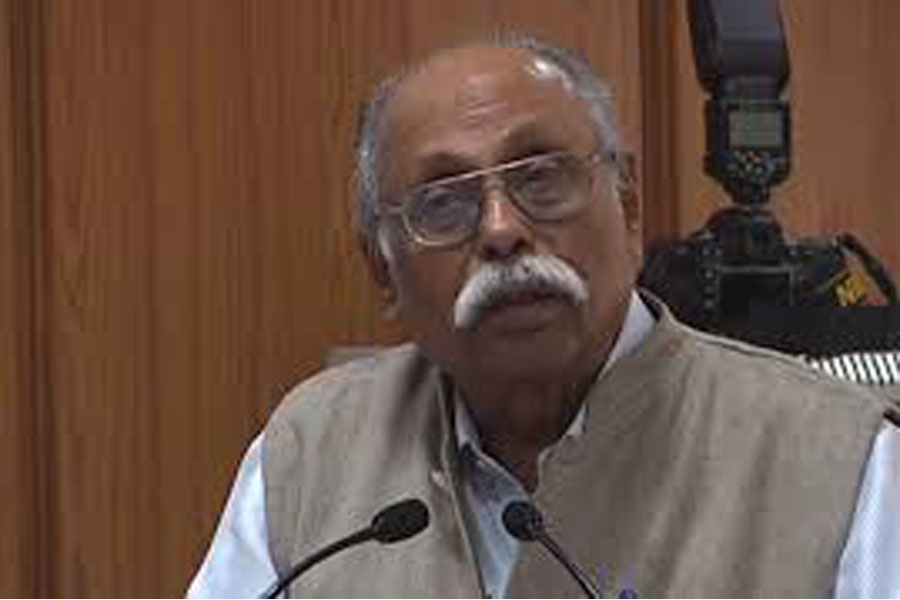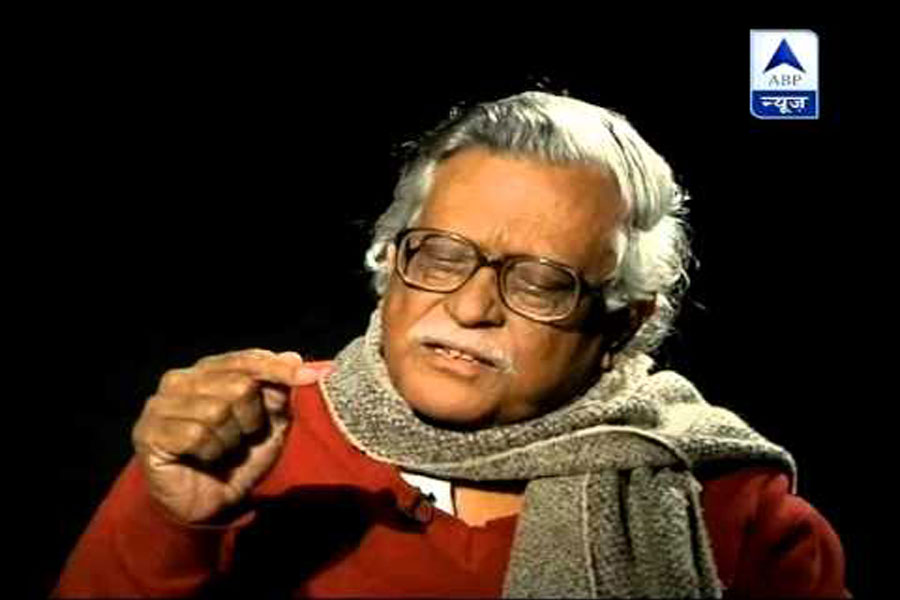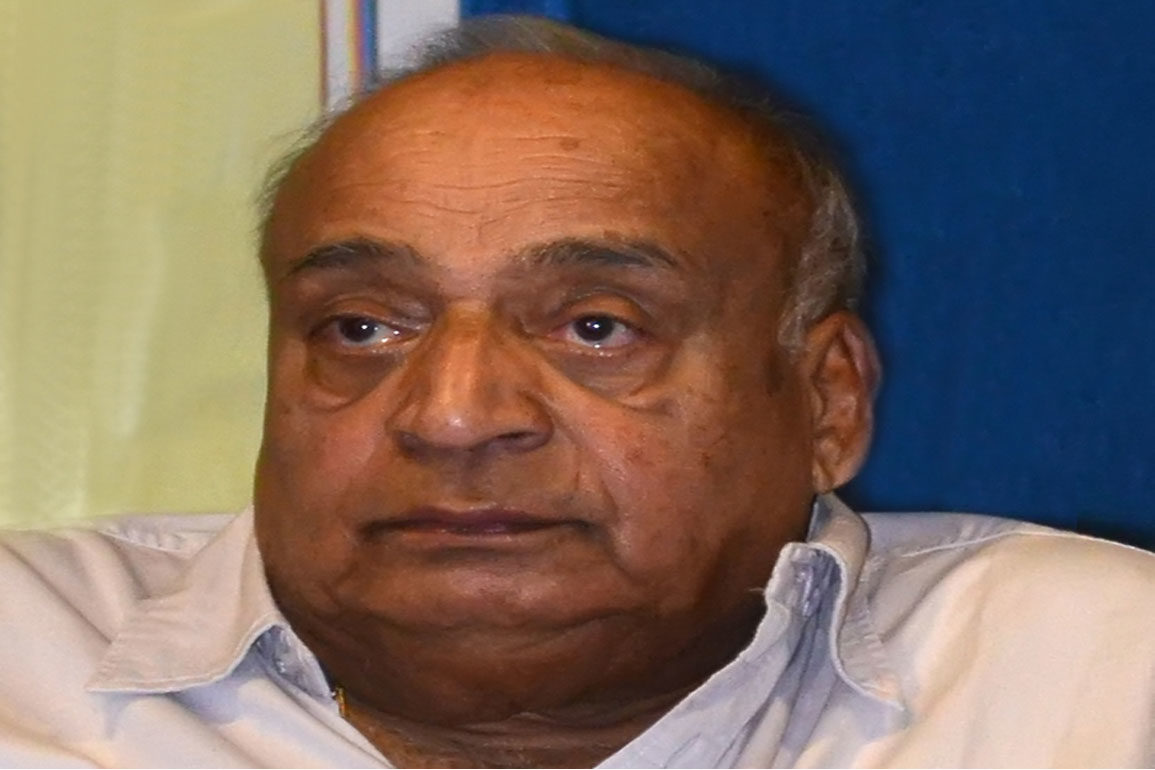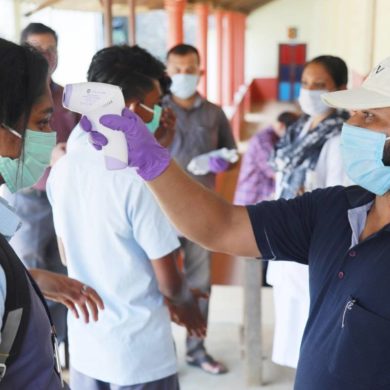When I first met Veerendra Kumar five decades ago, he had not become the Veerendra Kumar of today. He had not become one of the finest bilingual orators. Nor had he become the great intellectual and widely-read writer of later days. He was not heading a huge media house yet. He was just a landlord who would never disappoint anybody who would go to him for donations. His multi-disciplinary talent that Kerala was witness to, in the last forty years, was a result of his own efforts to hone his skills and attain his true potential.
My first meeting
It was as part of a fundraising programme I first met him. Cartoonist Yesudasan had been running the Asadhu magazine before he joined Manorama. Yesudasan reached Kozhikode heartbroken after he burned his hands conducting a cartoon exhibition in Thiruvananthapuram. He wanted to hold the exhibition in Kozhikode to erase the debt incurred in Thiruvananthapuram. Veerendra Kumar was not part of Mathrubhumi at the time and neither was the KTC Group of Companies. I introduced Yesudasan to P V Gangadharan (of KTC) and K N Ramdas Vaidyar who was famous in Kozhikode that time.
Pala K M Mathew (also a former journalist with Manorama and two-time MP) was then the general manager of the Manarcaud Pappan-owned ‘Maharani Hotel’ in Kozhikode and he lent his car to Yesudasan who insisted that I accompany him. I refused because I did not want to be known in Kozhikode city as a donation seeker. I assured him that I would accompany him while meeting estate owners in Wayanad and thus we reached Veerendra Kumar’s Puliyarmala estate. All through my trip to Puliyarmala I was wondering how someone who owned a vast area of private estates could claim to be a socialist. But that thought never crossed my mind again because the trip was a revelation on how deeply the socialist ideals had taken root in Veerendra Kumar’s family, for at least two generations.
Though it was our first direct meeting, we used to talk over the phone before that. One instance involved the then firebrand socialist leader George Fernandes, who got married late. Fernandes’ marriage to Congress Minister Prof Humayun Kabir’s daughter Laila Kabir had caused a huge sensation. I called Veerendra Kumar from Manorama as soon as I got tipped that the couple was at his Bungalow for their honeymoon getaway. I sought his permission to arrange for an interaction and take photographs of the newly-wed couple to break the news in Manorama – Mathrubhumi did not have this information yet. Veeran readily acceded to my request and made arrangements without letting Mathrubhumi get wind of it.
A forgotten ‘Mont Blanc’
Once I was traveling from Kozhikode to Kottayam with my wife. Veerendra Kumar was also there next to us. He got down in Kochi early morning. When the train was about to reach Kottayam, my wife noticed that Veerendra Kumar had left his pens in the train. I thought they were ‘use and throw’ pens, otherwise he would not have left them in the train. Anyway, I took those pens with me and on the platform I found an employee of Mathrubhumi waiting. He asked me if I had seen the pens. They were from the famous ‘Mont Blanc’ which was not yet launched in India. Even though he was a diehard socialist, Veerendra Kumar enjoyed collecting costly pens, watches and glasses from the best brands.
Once, we were together for a convention organised by Malayali association, ‘Fokana’, in America. In American malayali association functions, it is customary to speak in all the sessions. ‘Fokana’’s conclave had a chiriyarangu (humour session) one day and we were supposed to talk. Veerendra Kumar became uneasy and persuaded me to start the session.
I held forth about an incident of Malayala Manorama carrying a false news in the obituary column. It is usually a tough task to deal with the emotions of the kith and kin whenever we mess up in the obituary section. It is also a matter of pleasure when we give better obituaries in comparison to other dailies. Kovalam Sudhakaran’s was one such case. He was the Revolutionary Socialist Party (RSP)’s first district secretary in Wayanad. Sudhakaran was elected to the position even before the district was carved out. RSP was the only party which had appointed a district secretary for Wayanad following the people’s demand for a separate hill district. Though he was the party secretary of a district yet to be carved out, we gave the news of Kovalam Sudhakaran’s ‘demise’ due prominence. No other daily had published that news.
Around 11, a man came to my cabin and introduced himself as Kovalam Sudhakaran. I suddenly leaned back on the chair realizing the bitter consequences I might have had to face, especially since an RSP man stood before me. “There is a news about my death in Manorama today. People will come here to give correction. But you should not correct. I myself gave the news of my death as I was not in a position to stay back in Wayanad. I am leaving Malabar.” Even before I could react, he had left”. It was Veerendra Kumar who completed the story by saying why Sudhakaran had to leave Wayanad when his turn came to speak.
The flow of speech
When Commonwealth Press Union conducted a workshop in Kottayam for Indian journalists, Mammen Mathew (of Malayala Manorama) brought Veerendra Kumar to inaugurate it. The audience, Indians and foreigners among them, was literally spellbound by the speech delivered by Veeran in English. U R Ananthamoorthy has once remarked that Veeran’s speeches in Kannada were also excellent. It was during that session at Kottayam Veerendra Kumar opened up about his father Padmaprabha Gowder’s remark, “you are good for nothing but for rearing cattle.”
Later, Veerendra Kumar himself told me about the philosophy behind those words of his eighth grade-qualified father. “I failed matriculation in the 1950s. Since we were landlords, we had a good number of cattle folk. His remark made me sad and I asked him what he wanted me to become – to which he answered – Master of Arts (MA). Those days there was just one MA degree holder in all of Wayanad.” When Veerendra Kumar was back after obtaining an MA degree from the Vivekananda College in Madras, his father tested him one more time, “how many streams of philosophy are there in India and Europe.” Veeran rattled them out one by one. “Only this much?” his father asked, to which Veeran said, “these are the important ones”. Once again, his father asked him to go rear cattle and explained: Each and every human, every grain of sand, is a universe, a philosophy. “What knowledge have you gained without learning this? That is why I said it is better for you to go and rear cattle”.
Veeran went to the United States with this newly-acquired realisation and became one of the first Keralites to earn a Master of Business Administration (MBA) from America. It is neither in Mumbai nor in Kolkata MBA course was first launched in India, but at a college in a small town called Waltair in Andhra Pradesh. It is not clear if the course in Waltair had been initiated when Veerendra Kumar had left for the US. Even if the course was available in Waltair, his father would not have sent him there to save one more narration of the cattle story.
There was no party or group in which Veerendra Kumar did not have friends. Even in the times when he was moving from stage to stage delivering fiery speeches against Jan Sangh and the BJP, he had prayed for L K Advani at Guruvayur temple. He wrote in a memoir of former Manorama Delhi Bureau Chief T V R Shenoy, “Once there was a Rs 7000 corruption case against Advani. It was known that the allegation would not stand. Anyway, the allegation raised a furore. I was in Guruvayur that day. I offered archana on Advani’s behalf and after this when I reached Delhi, I met him there.”
The man who shaped Mathrubhumi‘s destiny
The 43-year-old Veerendra Kumar entered Mathrubhumi like an apprentice at a time when third-generation family-run dailies like Kerala Kaumudi and Malayala Manorama stood tall with their continuity in leadership. With his unparalleled leadership qualities, he impressed everyone and steered the daily, grappling with regular strikes, towards a much better future. His greatest contribution to Mathrubhumi would be that he made it a pan-Kerala daily bringing it into Thiruvananthapuram from its bastion in Malabar.
Though negotiations had taken place and an acre of land was purchased at Karamana for the Thiruvananthpuram unit of the newspaper during the tenure of M J Krishnamohan as managing director, the unit didn’t materialize before his death in 1979. In the meantime, Mathrubhumi went through the longest strike of two months. Veeran felt that it would be too late if a new building had to be constructed and so, he started the office in one of the Ammaveedu (residence of the consorts of Maharajahs of Travancore) and launched the Thiruvananthapuram unit in November 1980. M V Devan humorously remarked that ‘Mathrubhumi’ itself meant mother’s house (literal translation of Ammaveedu).
To make the arrival of Mathrubhumi in Thiruvananthapuram a matter of public debate, the newspaper published the interview of K Venu, a naxalite in hiding, with journalist P Rajan, on the very first day. It was the first-ever interview of someone in hiding being published by any Malayalam daily. It is neither Mathrubhumi nor Manorama which first printed the newspaper in an offset press but Deshabhimani – it was an Indian-made offset press. Veeran brought a foreign-made offset press to Thiruvananthapuram and started printing a Malayalam newspaper for the first time in colour. He ensured that the readers of Thiruvananthapuram got the best quality newspaper in printing and layout.
When a Power Minister wouldn’t grant electricity connection to Mathrubhumi in retaliation for a political story done against him earlier, people in Mathrubhumi began realising the cost of not coming to the State capital sooner. Mathrubhumi got the connection only after that minister temporarily handed over the charge of the department to another minister while embarking on a foreign trip.
When Malabar was part of Madras, Mathrubhumi was the daily of only Malabar and Thrissur. After the formation of the state in 1956 and consequent detachment with Madras, Mathrubhumi should have established a unit in Thiruvananthapuram immediately. I had once asked V M Nair, the then managing director of Mathrubhumi, as to why did they stop at Kochi when they decided to move southwards in 1962. He retorted, “Who would give advertisements for Mathrubhumi in Thiruvananthapuram? I cannot run the paper with the half-inch classifieds given by Tamil Brahmins”. From there, it has now reached at a stage where Rs 200-250 crore is made by all media houses in Kerala from advertisements from Thiruvananthapuram alone. Mathrubhumi’s history would have been different if it had established its second printing unit in Thiruvananthapuram. But Mathrubhumi stepped into the city only a quarter century after 1956.
When I look back, I wonder if Veerendra Kumar should have actually occupied the chair of the Managing Director. Should he have spent his valuable time for discussions on bonus with trade unions and putting signatures on vouchers worth more than 1000 rupees? In my opinion, M P Veerendra Kumar was one exceptional chief editor Mathrubhumi never had.
Translated from Malayalam by Greeshma Neelakandan; Edited by Anand Kochukudy
This obituary was originally published in Mathrubhumi daily on May 29 and has been translated and republished with permission.

